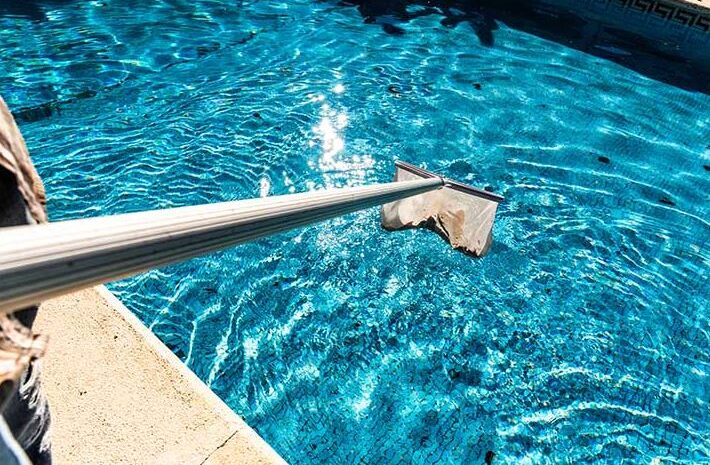
How to keep your pool clean
A clean pool is a healthy pool. Think of it as a human body. Eating healthy food and exercising can keep your body healthy, ensuring that you are able to use your body for many years. If you don’t keep your body healthy, diseases can develop and cause lasting damage. The same is true of a pool. When a pool is neglected, it doesn’t just get dirty, it can develop serious damage. A pool is ultimately a giant tub of standing water. If you’ve ever seen standing water that has gathered in a bucket, tire, or some other neglected place, you know what can happen. Standing water is a great home for all kinds of life. That includes algae, bacteria, and bugs like mosquitos. If you left your pool without maintenance for more than a few days, it would quickly start to turn into a murky, nasty swamp. Once that has happened, it can be hard to get the pool back to its pristine condition.
Pool Water Circulation – The heart of the water circulation is the pump. Your pool’s circulatory system has two sections, the suction side and the pressure side. Water exits the pool through the skimmer (and sometimes the main drain, or even two) powered by suction from the pump. As water passes through the skimmer, it gets its first cleaning. The skimmer collects large debris, like leaves, that could clog the system. The water then passes to the pump. The pump takes in the water coming from the skimmer and pushes it out into the next part of the circulation. From the pump, the water is pushed through a filter. Whatever type of filter you have, its main job is to remove tiny bits of debris from the water. This may include tiny impurities like algae and residue from things like shampoos, hair products, and sunscreen. After it leaves the filter, the water is pushed by pressure from the pump back to the pool. Many pools also have an in-line chlorinator that releases a slow, steady flow of chlorine and bromine into the water.
Cleaning – You should skim your pool daily. Using a skimmer attached to a telescopic pool pole, simply go through the pool and pick up any large debris you find like leaves, twigs etc. You should vacuum your pool regularly. Daily or every other day is a good schedule Finally, there is brushing. Brushing should be done every couple of days. Use a pool brush to brush down the walls and floor of your pool, including seats and steps. The brushing will knock off any algae or other tiny bits of junk that have stuck to your pool’s walls and floor. From there, they can be cleaned up when you vacuum.
Chemicals – If you find yourself adding chlorine at a faster rate than usual, or you’re having a hard time maintaining a steady pH, there may be other chemical imbalances in your water. Every couple of days you should test your pool water using a testing kit. There are many different kits available that test everything from just the pH and chlorine to a whole host of chemical levels. You can go to your local pool supply shop and talk to them about what’s best for you and your pool. You can also bring a water sample to most pool shops and they will test it for you.



